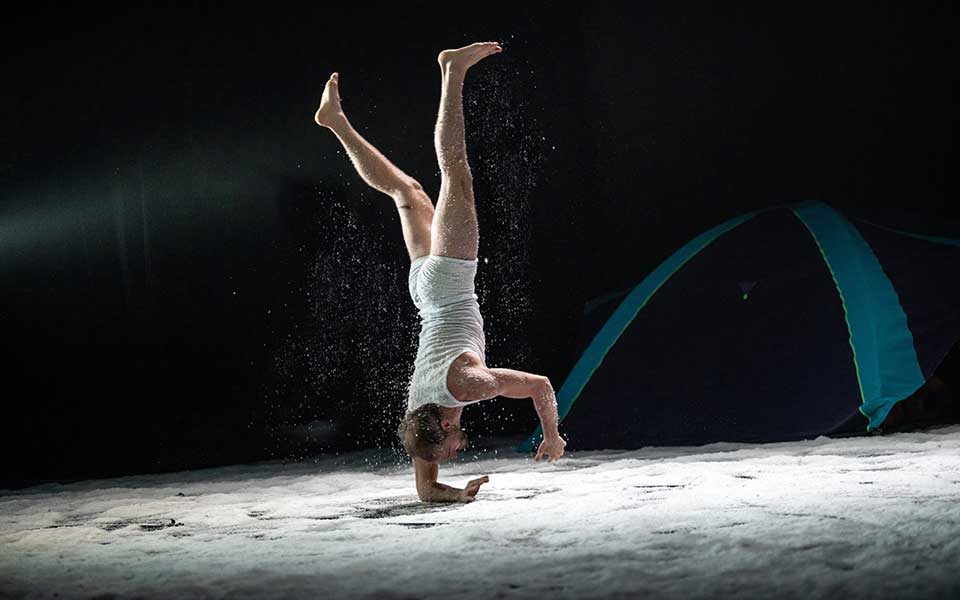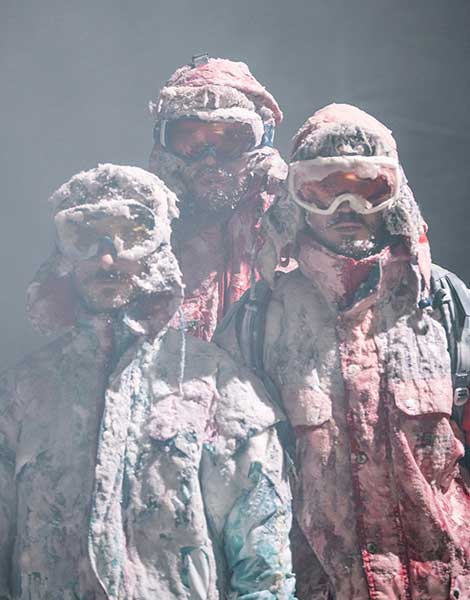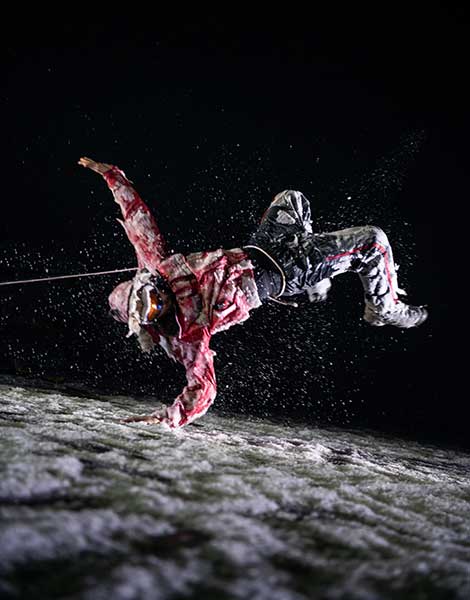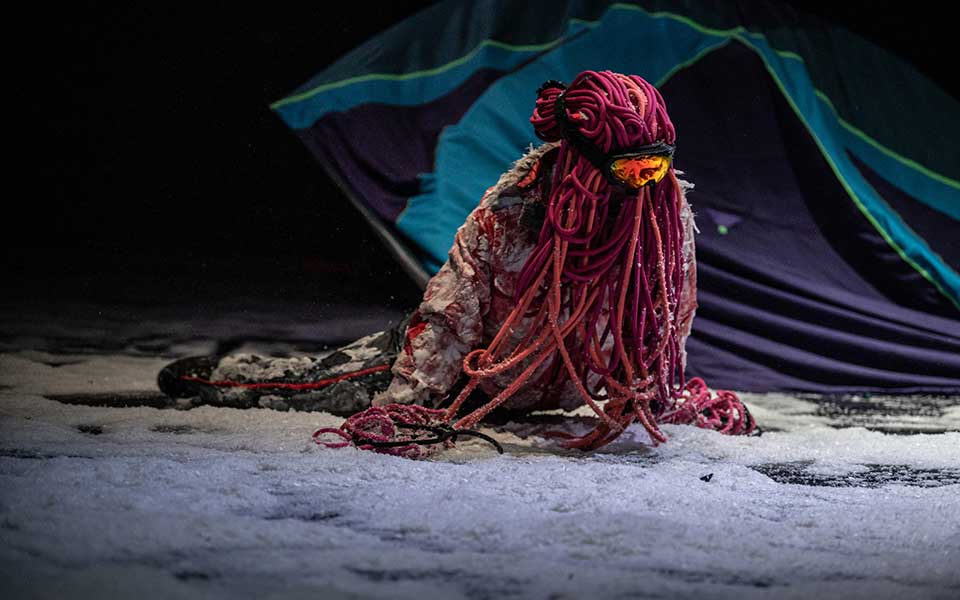As the 28th Kalamata Dance Festival opens tomorrow, July 15, the Greek audience will get to see one of the festival’s biggest performances in this year’s program, “WHITEOUT: The Conquest of the Useless,” choreographed by Piergiorgio Milano. The performance is a tribute to all the mountain climbers who have disappeared, and is dedicated to Greek mountaineer Antonis Sykaris, who died in April this year soon after having reached the peak of Nepal’s Mt. Dhaulagiri, the world’s seventh highest mountain.
In an interview with Greece Is, Milano spoke about the metaphor of the mountain and what message he hopes this production – which he prefers to describe as a “movie” instead of a “dance performance” – will convey to its audience.
How do you feel about participating in the Kalamata dance Festival?
I’m very happy to be part of this festival and especially that I was able to bring this work to it, which is the most mature work of my career so far. It’s an honor.
Why did you choose the theme of mountaineering and those who’ve lost their lives doing it? Is this more for metaphorical reasons or are you genuinely fascinated with mountaineering?
I’ve always been fascinated by the protagonists of those stories because they share a lot of qualities as all human beings do, but in a mountain story they’re stronger and more pronounced. Ambition, obsession, courage, desire, trust, friendship are things every person experiences in their life; but through mountaineering these elements become more visible and spectacular.
Alpinism in itself is a metaphor of the human condition – as the title says, it’s “The conquest of the useless” because there is absolutely no reason to conquer a mountain, there’s nothing at the top of a mountain that we can’t find at ground level, but people will even risk their own life in order to reach it. And thus, it’s completely useless as an action but at the same time it’s also essential. What is essential is the quest itself, and this correlates to everyone’s daily life. Everyone has his own “mountain” to climb, and everyone is disposed to risking their life to achieve reaching certain peaks.

© Andrea Macchia / Piergiorgio Milano website
How did you turn the act of mountaineering into dance?
There was a very long study process on the physicality that’s pushed to the extreme in mountaineering. All the tension, the stress, the forces, the specific movements and rhythmic actions, and the combination of these during the climb up a mountain. It involved a very long process of research – from attending talks and conferences and reading books to watching documentaries – and then transcribing all that into a physical language over a long period of time in the studio, until we could extract the patterns we used in the choreography.
This is not just a dance show – the biggest aim of this is to be like a mountain movie. Each scene that we see in the show comes from a book. Every single movement or action is fully related to something that has really existed. We are actually storytelling.
What were the greatest joys and challenges of choreographing this performance?
Both the joy and challenge was to give rhythm to something that has no rhythm. Everything is based on rhythm – words, action. And mountaineering is something that has no rhythm because everything is ultra-stretched and ultra-slow, it’s like watching a time lapse. The real challenge was how to do that on stage – and managing to find a way to do that was the greatest joy.
How do you bring the experience of the mountain to the audience?
For a long time I thought I’d have to construct a mountain on stage and I spent a lot of time talking to constructors and designers about how to do it. But whenever we got close to finding a solution I felt it was wrong – it was fake. So I reached the conclusion that we needed to work with echoes, memories, traces, textures, colours, and sounds, all the elements that evoke the mountain in us without the mountain needing to be there. Thus, each spectator imagines his own mountain and is completely present on the mountain.

© Andrea Macchia / Piergiorgio Milano website

© Andrea Macchia / Piergiorgio Milano website
How important has it been for you as a choreographer to prepare this performance?
This performance has been very, very tough and took a long time to research and prepare because it was a so ambitious. I’ve never done something like this before. I always work with the borders between circus and dance, which can be a great challenge, but this time there was something more added to the challenge, which was to add another language – so dance, circus and alpinism. It has been a big step in my career to face a challenge I wasn’t sure at all would be possible, and see that in the end the result works with all kinds of different audiences in many different countries.
What are you working on next?
I’m also working on another site-specific project that will premiere later this year, on September 24-25. The creation, called Vague (waves in French), will take place on a beach, and features three performers who have a dancing session with the sand. There is also a floating structure, swim choreography, and underwater parts.












